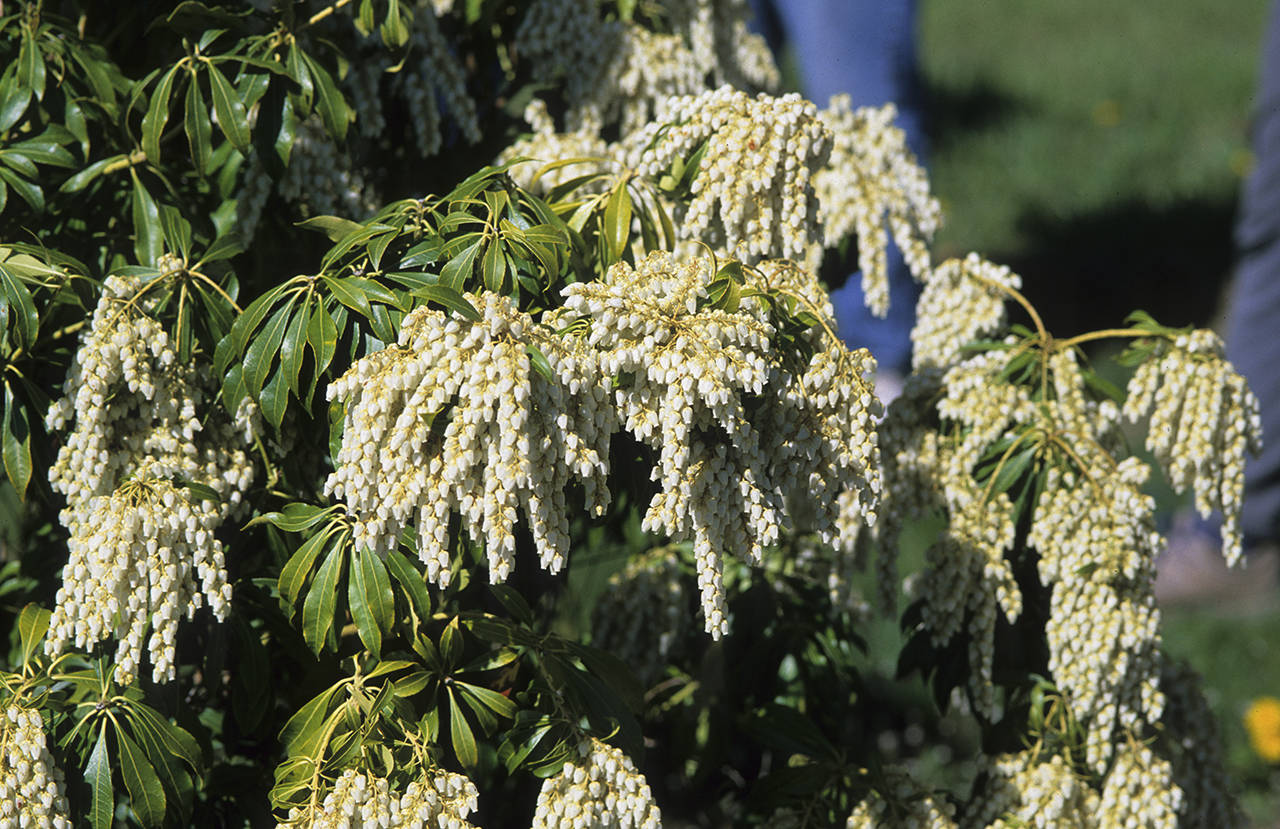What: Smothered in snow-white flowers, Pieris japonica “White Cascade” is a herald of spring. When in full bloom, one can hardly see the delicate evergreen foliage hidden beneath the trusses of gracefully cascading chains of blooms. Also called the lily-of-the-valley shurb, “White Cascade” has a high resistance to frost damage. Unlike most other Pieris, it will quickly drop any browned damaged flowers allowing fresh new blooms to steal the show. Its slow growth and refined habit make it an excellent choice for the urban landscape. Pieris are a favorite and important food source for our native pollinator, the mason bee. Play off the delicate, evergreen foliage of lily-of-the-valley shrub with coarser plants, such as rhododendrons, or other bolder, variegated plants. Ferns, hostas and epimediums also thrive in the company of this beautiful shrub. This Pieris cultivar stood out at an extensive trial at the North Willamette Research and Extension Center in Oregon.
Where: Japanese andromeda is easy to grow in rich well-drained or sandy soil. This selection will also tolerate clay soil if the drainage is adequate. It prefers a site with full sun to light or open shade for the best flowering and growth.
Size: The lily-of-the-valley shrub will grow to be 8 feet tall and 8 feet wide when mature.
Care: Occasional watering during dry weather will keep “White Cascade” looking its best — if planted in sandy soil, regular watering may be necessary. Faded flowers can be snapped off or lightly sheared off. This should be done as soon as the flowers have faded. Avoid locations in hot spots.
— Richie Steffen, Great Plant Picks
Talk to us
> Give us your news tips.
> Send us a letter to the editor.
> More Herald contact information.

























